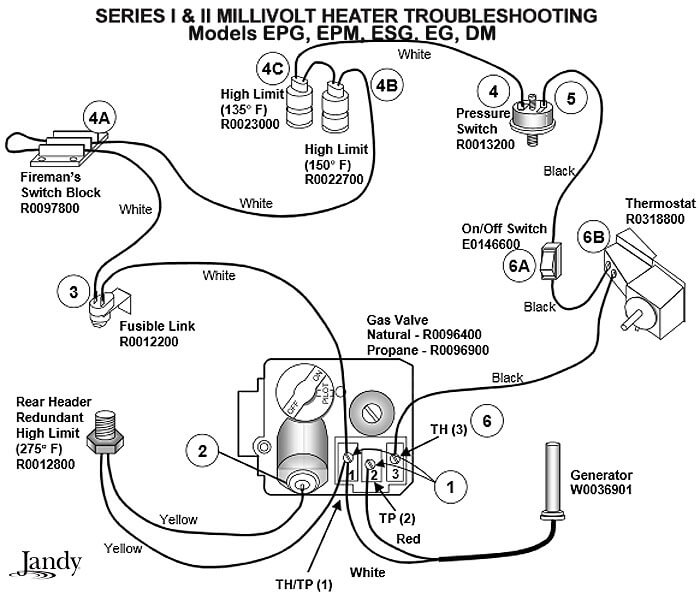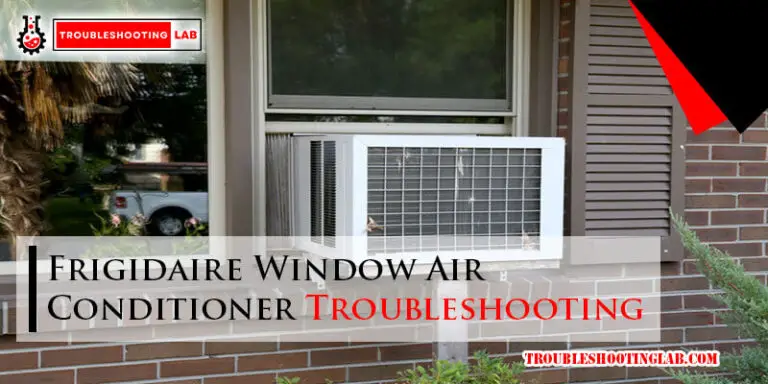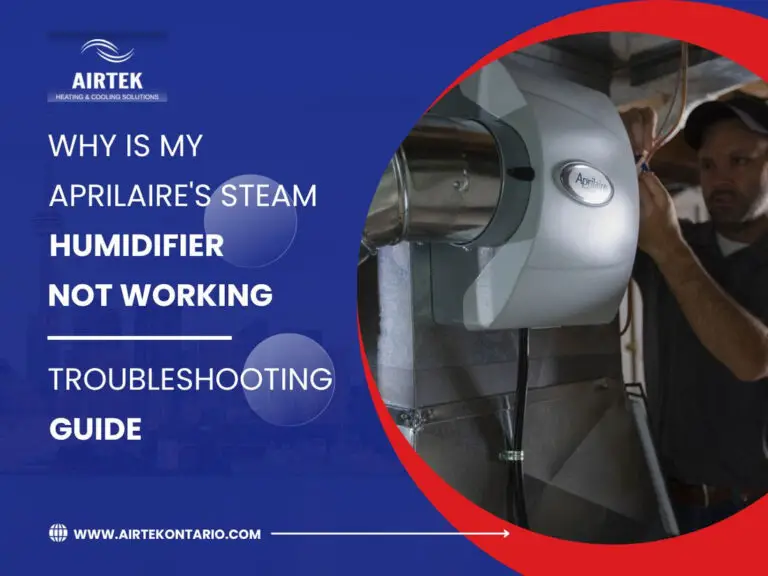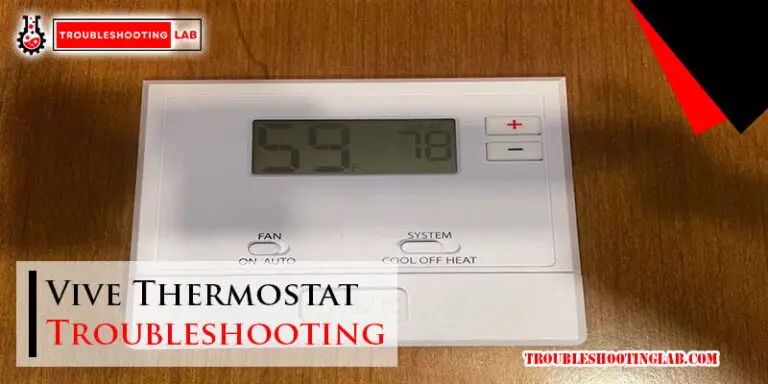Hayward Heater Troubleshooting: Quick Fixes for Common Issues
Is your Hayward pool heater acting up and leaving you frustrated? Don’t worry—you’re not alone.
Pool heaters can be temperamental, and when they stop working, it can feel like your relaxing swim plans are on hold indefinitely. But here’s the good news: most issues can be resolved without calling in an expensive technician. In this post, we’ll walk you through simple and effective troubleshooting tips to get your Hayward heater back in action.
Whether it’s not heating properly, throwing error codes, or refusing to turn on altogether, you’ll find clear, actionable steps to solve the problem. Stick around, and you’ll save time, money, and the headache of guesswork. Ready to dive in? Let’s fix that heater!

Credit: www.troublefreepool.com
Common Heater Problems
Hayward pool heaters are a fantastic addition to any pool setup, but like any equipment, they can run into issues over time. Understanding the common problems you might face can save you time, money, and frustration. Let’s dive into some of the most frequent heater troubles and how you can troubleshoot them effectively.
Heater Not Turning On
Is your Hayward heater refusing to start? This is one of the most common issues, and it’s often tied to simple fixes. First, check that the power supply is active—sometimes a tripped breaker or a disconnected plug is the culprit.
Next, ensure the thermostat is set higher than the current pool temperature. If the heater still won’t turn on, inspect the pressure switch. Low water flow due to a dirty filter or closed valve can prevent the heater from starting. Addressing these simple checks can often solve the problem quickly.
Low Heating Efficiency
Does your pool take forever to heat up? Low heating efficiency can be frustrating, especially when you’re ready to swim. Start by cleaning the heat exchanger—debris or calcium buildup can block proper heat transfer.
Also, take a look at your gas supply if you’re using a gas heater. A weak or inconsistent flame may point to a clogged burner or gas line. Regular maintenance and cleaning can prevent these issues from worsening.
Frequent Cycling On And Off
Does your heater keep turning on and off too often? This is called “short cycling,” and it could wear out your unit faster if left unchecked. One common cause is a faulty thermostat or temperature sensor sending mixed signals to the heater.
You might also want to check the water flow. A clogged filter or pump issue can disrupt the flow, causing the heater to cycle unnecessarily. Fixing these small issues can stabilize your heater’s performance.
Unusual Noises From The Unit
Is your Hayward heater making strange sounds? Clicking, banging, or humming noises are not normal and often point to mechanical issues. A common culprit is debris trapped in the fan or burner, which can cause vibrations or block airflow.
Rattling sounds might mean loose screws or components, while a loud banging could indicate delayed ignition in a gas heater. Don’t ignore these noises—they’re often early warning signs of bigger problems. Tightening loose parts or cleaning out debris can often solve the issue.
Have you experienced any of these problems with your Hayward heater? By tackling these common issues head-on, you can extend the life of your heater and enjoy a warm, inviting pool for years to come.

Credit: intheswim.com
Checking Power Supply
Is your Hayward heater giving you trouble? Before diving into complex repairs, start with the basics: the power supply. Many heater issues stem from simple electrical problems that are easy to fix. Let’s walk through the key steps to ensure your heater has the power it needs to operate smoothly.
Inspecting Electrical Connections
Loose or corroded electrical connections can disrupt your heater’s performance. Grab a flashlight and carefully inspect the wiring at the control panel and power source. Look for frayed wires, burnt marks, or loose screws. Tighten any loose connections with a screwdriver and clean corroded terminals using a cloth and a bit of baking soda mixed with water.
Did you recently move the heater or make adjustments near its wiring? Even small disturbances can loosen wires. Make it a habit to check connections regularly, especially after maintenance or movement.
Testing Circuit Breakers
A tripped circuit breaker is one of the most common culprits behind a heater that won’t start. Head to your home’s electrical panel and find the breaker labeled for your Hayward heater. If the switch is flipped to the “off” position, reset it by flipping it back to “on.”
Still encountering issues? Check if the breaker trips again immediately after resetting. This could indicate an electrical overload or short circuit. You may need a professional electrician to diagnose deeper problems.
Replacing Blown Fuses
Blown fuses can stop your heater from working entirely. Check the fuse box connected to your heater. If you see a fuse with a broken filament or a discolored glass, it’s time to replace it. Use the exact type and rating of fuse recommended in your heater’s manual.
Don’t have a spare fuse handy? Stock up on extras to avoid delays in future troubleshooting. Keeping a few replacements in your toolbox will save you from frustration down the line.
When was the last time you checked your heater’s power supply? Regular inspections can prevent minor issues from turning into major headaches. Follow these steps, and you’ll likely have your heater back in action before you know it!
Resolving Temperature Issues
Hayward pool heaters are reliable, but temperature issues can occur. These problems often stem from calibration, buildup, or flow restrictions. Resolving them ensures your pool stays warm and enjoyable. Below are steps to address common temperature issues effectively.
Calibrating The Thermostat
A miscalibrated thermostat can cause incorrect temperature readings. Start by checking the thermostat settings. Ensure it matches your desired pool temperature. Use the heater’s manual to recalibrate the thermostat if needed. A properly set thermostat improves heating efficiency.
Cleaning The Heat Exchanger
Heat exchangers can collect debris or scale over time. This buildup reduces heating efficiency and causes uneven temperatures. Turn off the heater and inspect the heat exchanger for dirt or scale. Use a soft brush or cleaning solution to remove any deposits. Regular cleaning prevents performance issues.
Addressing Flow Rate Problems
Low water flow can affect heater performance and temperature consistency. Check the pool pump and filter for blockages. Ensure the water flow rate meets the heater’s requirements. Clean or replace clogged filters to restore proper flow. Correct flow rates help maintain consistent heating.
Fixing Ignition Problems
When your Hayward pool heater refuses to ignite, it can feel frustrating, especially when you’re looking forward to a warm swim. Ignition problems are common, but the good news is that they’re often fixable with some simple troubleshooting. Let’s walk through the steps to get your heater back up and running, so you can spend less time worrying and more time enjoying your pool.
Inspecting The Igniter
The igniter is responsible for sparking the heater to life, so it’s the first thing you should check. Look for signs of wear, such as cracks or discoloration, as these could indicate the igniter needs replacing. If it appears intact, use a multimeter to test for continuity—no continuity means it’s likely faulty.
Sometimes, dust or debris can block the igniter’s function. Gently clean it with a soft cloth and ensure all connections are secure. If you’ve recently replaced the igniter and the issue persists, double-check that you’ve installed the correct part for your specific model.
Cleaning Burners And Pilot Tubes
Clogged burners or pilot tubes can stop your heater from igniting. Over time, dirt, spider webs, or rust can accumulate and block the flow of gas. Turn off the gas supply and use a brush or compressed air to carefully clean these components.
While cleaning, inspect the burners for any signs of corrosion or damage. Replace any worn-out parts to prevent future issues. If the flames from the burners are uneven or yellow instead of blue, that’s another sign they might need cleaning or adjustment.
Ensuring Adequate Gas Supply
A weak or interrupted gas supply can also cause ignition problems. Check that your gas valve is fully open and that there’s no kink or blockage in the gas line. If you suspect low gas pressure, contact your gas provider to verify the supply is sufficient for your heater.
After confirming the gas supply, inspect the gas regulator for any malfunctions. A faulty regulator can restrict the flow of gas, making ignition impossible. Replacing a bad regulator is a straightforward fix and could save you from bigger headaches down the road.
Have you tackled ignition problems before? Don’t hesitate to share your own tips or questions in the comments below. Troubleshooting can feel intimidating, but with a little patience and these actionable steps, you can often solve the issue yourself.
Addressing Error Codes
Hayward pool heaters are designed to ensure smooth operation and comfort. Yet, error codes can sometimes appear, disrupting performance. Understanding these codes is key to diagnosing and fixing issues quickly. This section covers how to identify, reset, and address error codes effectively.
Identifying Common Error Codes
Hayward heaters display error codes to alert users about specific problems. These codes include issues like “LO” for low pressure or “CE” for communication errors. Refer to the user manual for a detailed list of codes. Knowing what each code means helps pinpoint the problem faster.
For example, “IF” indicates ignition failure. This could mean the gas supply is blocked or the igniter is malfunctioning. If you see “HS,” it signals high system temperature. This may require checking water flow or cleaning filters.
Resetting The Control Panel
Resetting the heater’s control panel can clear minor issues. Start by turning off the heater’s power supply. Wait for a few minutes before turning it back on. This simple step often resolves temporary glitches.
If the error persists, inspect the wiring connections for loose or damaged cables. Confirm that the circuit breaker is not tripped. Ensure the control panel settings match your desired temperature and mode.
When To Seek Professional Help
Some error codes require expert attention. Persistent issues, such as recurring ignition failure, may indicate deeper problems. Faulty sensors, damaged circuits, or gas leaks demand professional expertise.
If troubleshooting steps fail, contact a certified technician. They can diagnose complex issues and ensure safe repairs. Always prioritize safety when dealing with electrical or gas-powered equipment.

Credit: www.youtube.com
Maintenance Tips
Keeping your Hayward heater in top condition doesn’t have to be complicated. A little attention to maintenance can save you from unexpected breakdowns and hefty repair bills. Let’s dive into some practical tips you can use to keep your heater running efficiently year-round.
Regular Cleaning And Inspection
Dust, debris, and even tiny insects can clog your heater’s components over time. Regular cleaning ensures proper airflow and prevents overheating issues.
- Clean the filter every few weeks to keep water flow steady. A clogged filter forces the heater to work harder, which may cause damage.
- Inspect the heat exchanger for any build-up. Use a soft brush or vacuum to remove dirt without damaging the fins.
- Check for any visible leaks or rust on connections. Early detection can prevent larger problems later.
Set a reminder on your phone or calendar to inspect your heater monthly. You’ll thank yourself when summer rolls around and everything works perfectly!
Protecting The Heater From Weather
Your Hayward heater is tough, but harsh weather can take its toll. Protecting it from the elements will extend its lifespan.
- Use a weatherproof cover to shield it from rain, snow, and excessive sun exposure. It’s a small investment with big benefits.
- Place the heater on a raised platform if flooding is a concern in your area. This prevents water damage during heavy rains.
- Trim nearby plants or trees to reduce the chance of leaves and branches falling into the unit.
Think about where your heater is installed—could it be better protected? A little rearranging might save you costly repairs.
Scheduling Professional Servicing
Even with regular DIY maintenance, some issues require a professional’s touch. Scheduling routine servicing can catch problems you might miss.
- Book a service appointment at least once a year, ideally before the swimming season starts. This ensures everything is in working order when you need it.
- Ask the technician to check gas connections, thermostat calibration, and electrical components. These areas require expertise you might not have.
- Don’t wait until there’s a problem. Preventive care is always cheaper and less stressful than emergency fixes.
Have you ever had a heater fail just when you needed it most? That’s exactly the kind of frustration professional servicing helps you avoid.
By following these tips, you’re not just maintaining your heater—you’re ensuring a hassle-free swimming experience for your family and friends. Which of these steps will you start with today?
Conclusion
Troubleshooting a Hayward heater doesn’t have to feel overwhelming. Focus on basic checks like power, filters, and settings. These simple steps often resolve common issues quickly. If the problem continues, consulting a professional can help. Regular maintenance also keeps your heater running smoothly for longer.
Always follow the manufacturer’s guidelines for safety and performance. A little care now can save you from bigger headaches later. Keep your pool or spa warm and ready for enjoyment. With patience and attention, your heater will stay reliable all season long.




